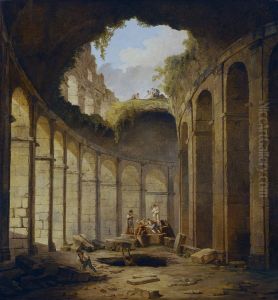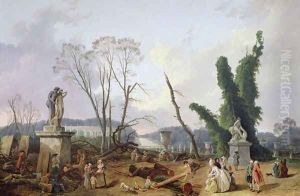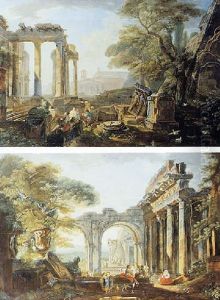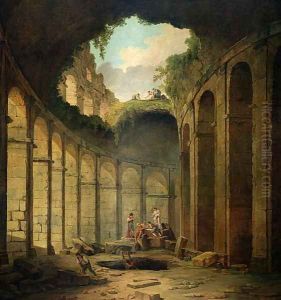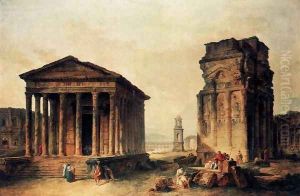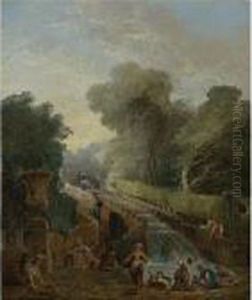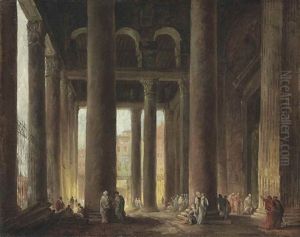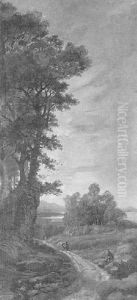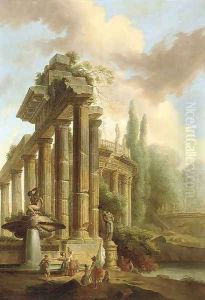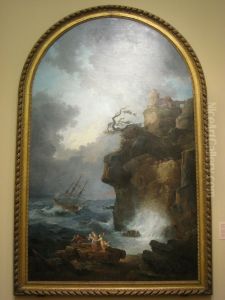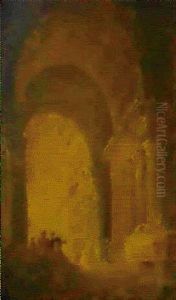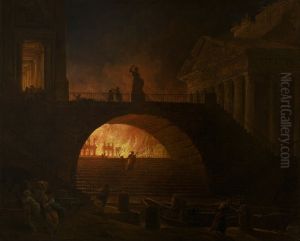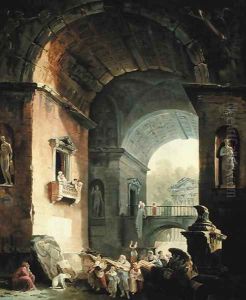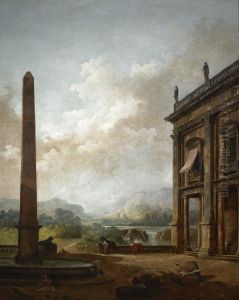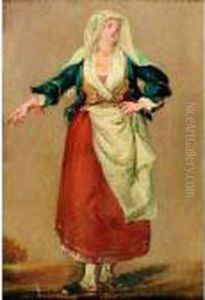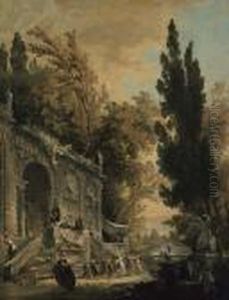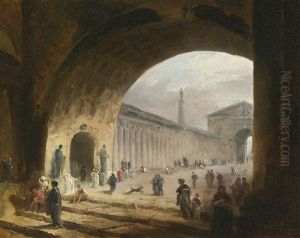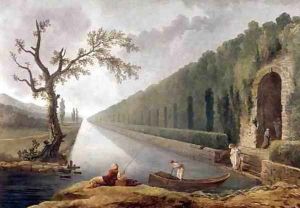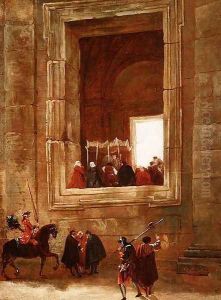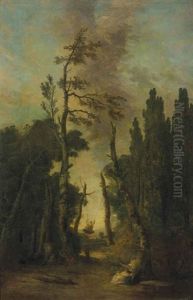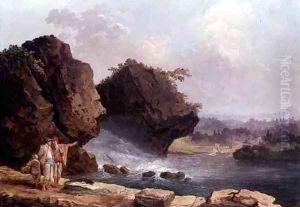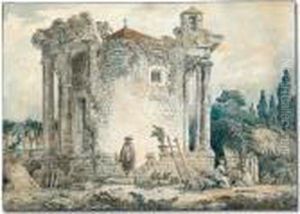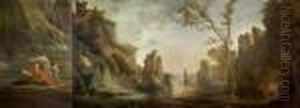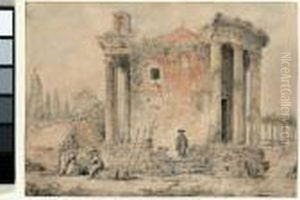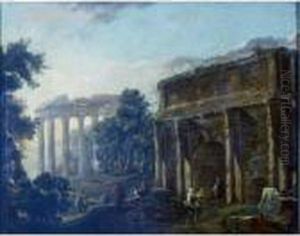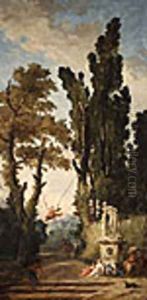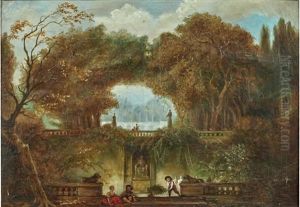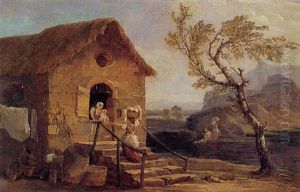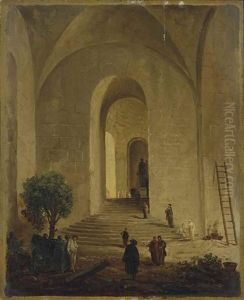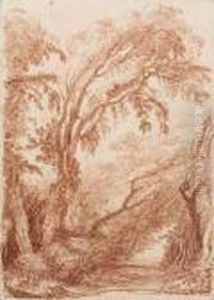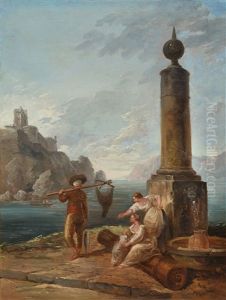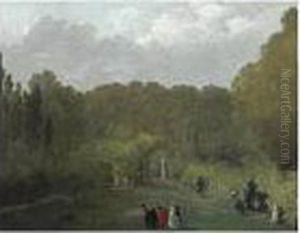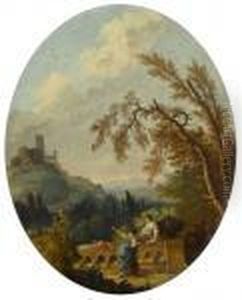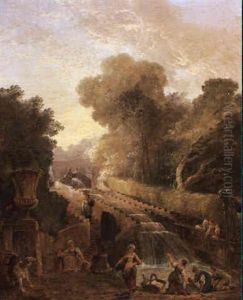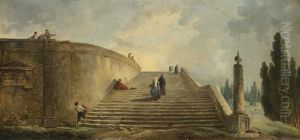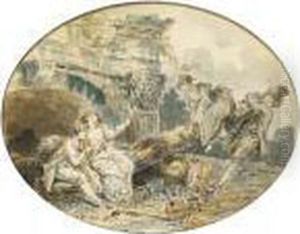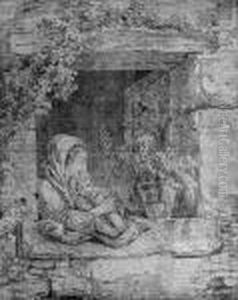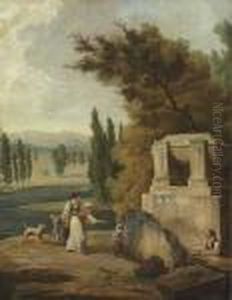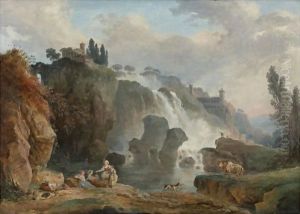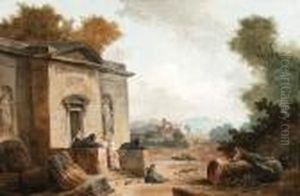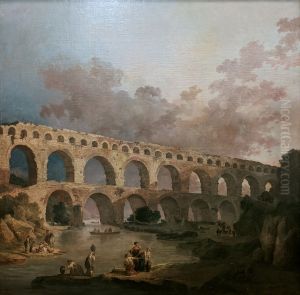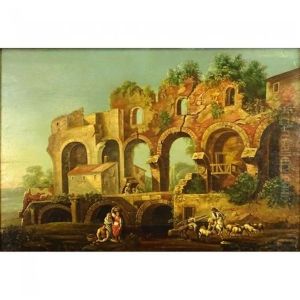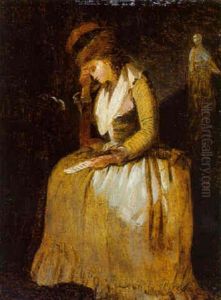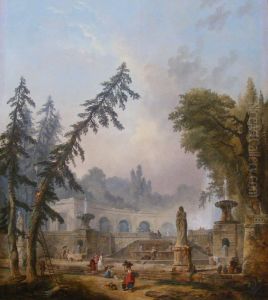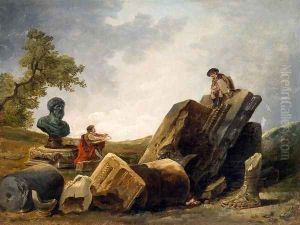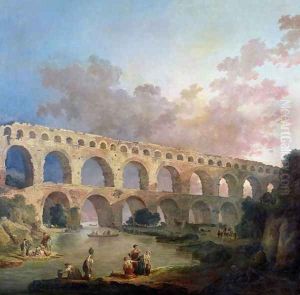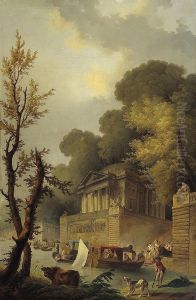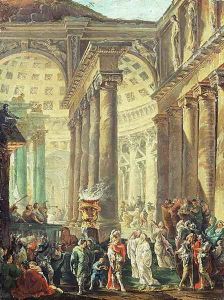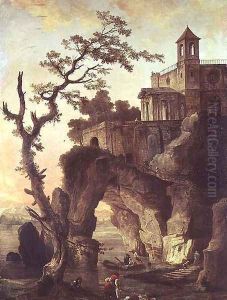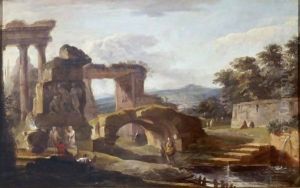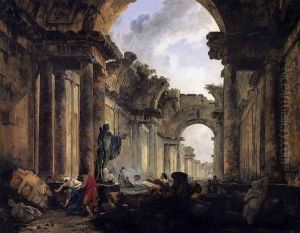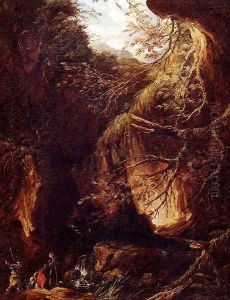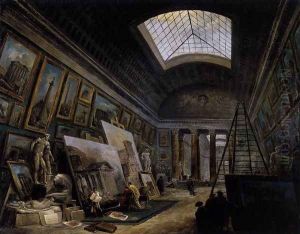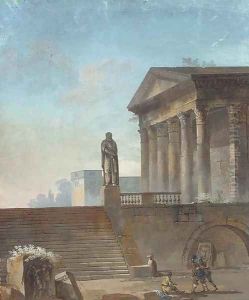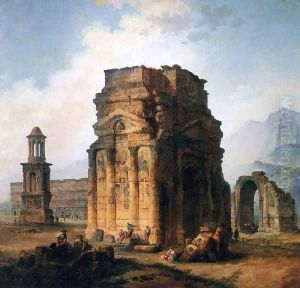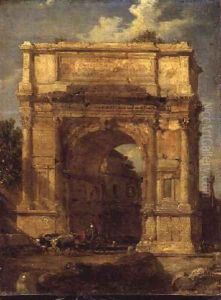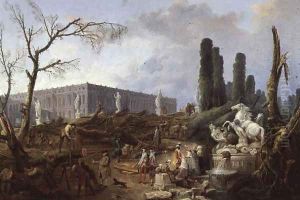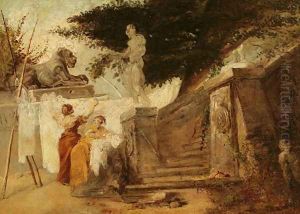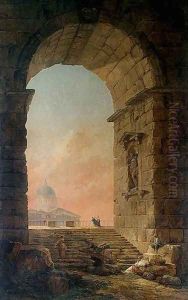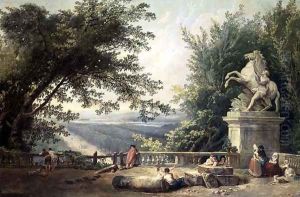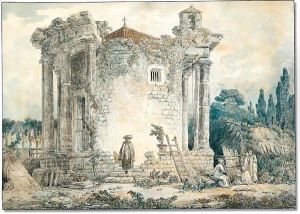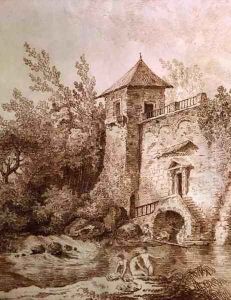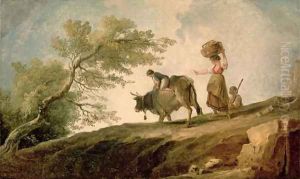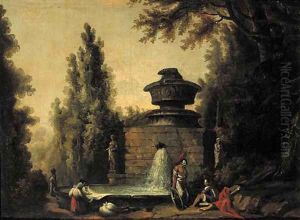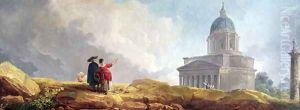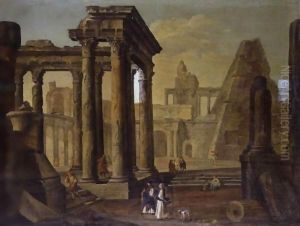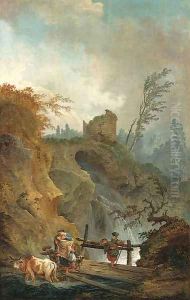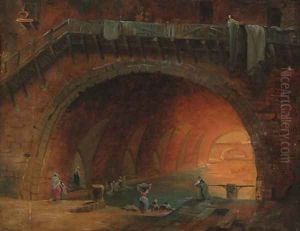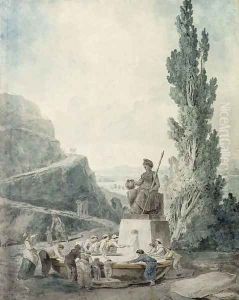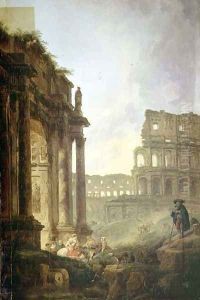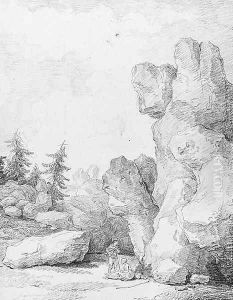Hubert Robert Paintings
Hubert Robert was a distinguished French painter, known for his landscape paintings and architectural scenes that often depicted ruins in a romantic and picturesque manner. Born on May 22, 1733, in Paris, France, Robert was the son of an official of the French crown. His early penchant for drawing led him to study under the sculptor Michel-Ange Slodtz who encouraged Robert's interest in art and architecture.
After his initial training, he went to Rome in 1754, where he lived for eleven years. During this time, Robert was influenced by the classical ruins of the city, as well as by the work of Giovanni Paolo Panini, a painter known for his vedute (views) of Rome. Robert's time in Italy shaped his distinctive artistic style that later became his trademark. He was often referred to as 'Robert des Ruines' because of his affinity for depicting ancient ruins.
In 1766, Robert returned to Paris and was admitted to the Académie Royale de Peinture et de Sculpture. He quickly gained popularity, and his works were sought after by influential patrons, including the French monarchy. Robert was appointed as a designer of the king's gardens and recorded the old Parisian architecture, which was being systematically demolished during the urban renewal projects of the time.
During the French Revolution, Robert was briefly imprisoned in 1793, but he continued to paint, creating some of his most profound works during this time. After his release, he struggled to regain his previous status but managed to continue working, producing landscapes and views of revolutionary Paris.
Robert's works are characterized by their romanticized portrayal of ruins and nature, often infused with a sense of nostalgia and contemplation. His paintings often featured figures among the ruins, giving life to the scenes and inviting the viewer to reflect on the passage of time and the transient nature of human achievements.
Hubert Robert died on April 15, 1808, in Paris. Today, his work is held in numerous prestigious collections, including the Louvre in Paris, the Hermitage Museum in Saint Petersburg, and the National Gallery of Art in Washington, D.C. His legacy lives on as an important contributor to French art, particularly in the genre of landscape painting and the aesthetic of the picturesque.
